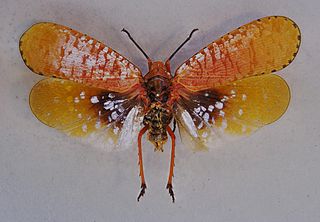
The International Union for Conservation of Nature (IUCN) Red List of Threatened Species, founded in 1964, is the world's most comprehensive inventory of the global conservation status of biological species. It uses a set of criteria to evaluate the extinction risk of thousands of species and subspecies. These criteria are relevant to all species and all regions of the world. With its strong scientific base, the IUCN Red List is recognized as the most authoritative guide to the status of biological diversity. A series of Regional Red Lists are produced by countries or organizations, which assess the risk of extinction to species within a political management unit.

Threatened Species are any species which are vulnerable to endangerment in the near future. Species that are threatened are sometimes characterised by the population dynamics measure of critical depensation, a mathematical measure of biomass related to population growth rate. This quantitative metric is one method of evaluating the degree of endangerment.

The conservation status of a group of organisms indicates whether the group still exists and how likely the group is to become extinct in the near future. Many factors are taken into account when assessing conservation status: not simply the number of individuals remaining, but the overall increase or decrease in the population over time, breeding success rates, and known threats. Various systems of conservation status exist and are in use at international, multi-country, national and local levels as well as for consumer use.

A least-concern species is a species that has been categorized by the International Union for Conservation of Nature (IUCN) as evaluated as not being a focus of species conservation. They do not qualify as threatened, near threatened, or conservation dependent.

A near-threatened species is a species which has been categorized as "Near Threatened" (NT) by the International Union for Conservation of Nature as that may be considered threatened with extinction in the near future, although it does not currently qualify for the threatened status.
Orophea hastata is a species of plant in the family Annonaceae. It is found in Peninsular Malaysia and Singapore.

Orophea is a genus of flowering plants in the family Annonaceae. There are about 37 species native to Asia.
Orophea palawanensis is a species of plant in the Annonaceae family. It is endemic to the Philippines.
Orophea thomsoni is a species of plant in the Annonaceae family. It is native to Kerala and Tamil Nadu in India.
Orophea uniflora is a species of plant in the Annonaceae family. It is endemic to southern India. It is threatened by habitat loss.
Orophea yunnanensis is a species of plant in the Annonaceae family. It is endemic to China.

An endangered species is a species that is very likely to become extinct in the near future, either worldwide or in a particular political jurisdiction. Endangered species may be at risk due to factors such as habitat loss, poaching and invasive species. The International Union for Conservation of Nature (IUCN) Red List lists the global conservation status of many species, and various other agencies assess the status of species within particular areas. Many nations have laws that protect conservation-reliant species which, for example, forbid hunting, restrict land development, or create protected areas. Some endangered species are the target of extensive conservation efforts such as captive breeding and habitat restoration.
Teracotona is a genus of moths in the family Erebidae from the Afrotropics. The genus was erected by Arthur Gardiner Butler in 1878.
Mordella submaculata is a species of beetle in the genus Mordella of the family Mordellidae, which is part of the superfamily Tenebrionoidea. It was discovered in 1936.
Teracotona submaculata is a moth in the family Erebidae. It was described by Francis Walker in 1855. It is found in Kenya, Malawi, Namibia, Somalia and South Africa.
Acalolepta submaculata is a species of beetle in the family Cerambycidae. It was described by E. Forrest Gilmour in 1947. It is known from Sulawesi.
Nupserha bidentata is a species of beetle in the family Cerambycidae. It was described by Johan Christian Fabricius in 1792, originally under the genus Saperda.

Sternotomis amabilis is a species of beetle in the family Cerambycidae. It was described by Frederick William Hope in 1843. It contains the varietas Sternotomis amabilis var. submaculata.
Tipula submaculata is a species of large crane fly in the family Tipulidae.

Aphaena is a genus of planthoppers in the sub-family Aphaeninae and the tribe Aphaenini Blanchard, 1847. Species are distributed from eastern India, Indo-China, China and Malesia.







